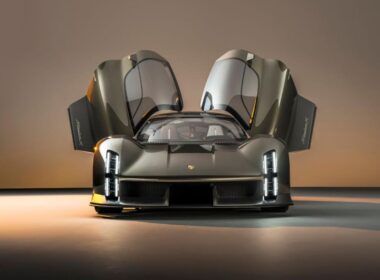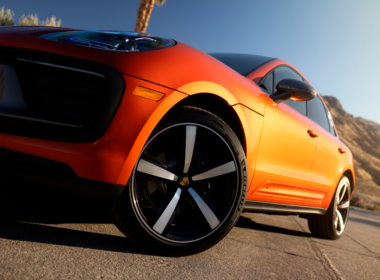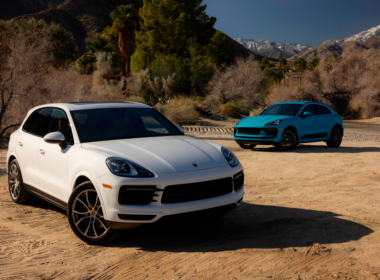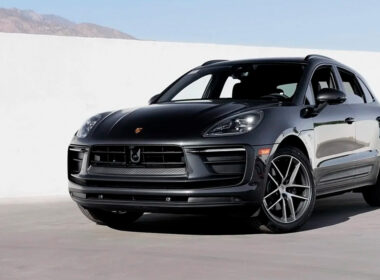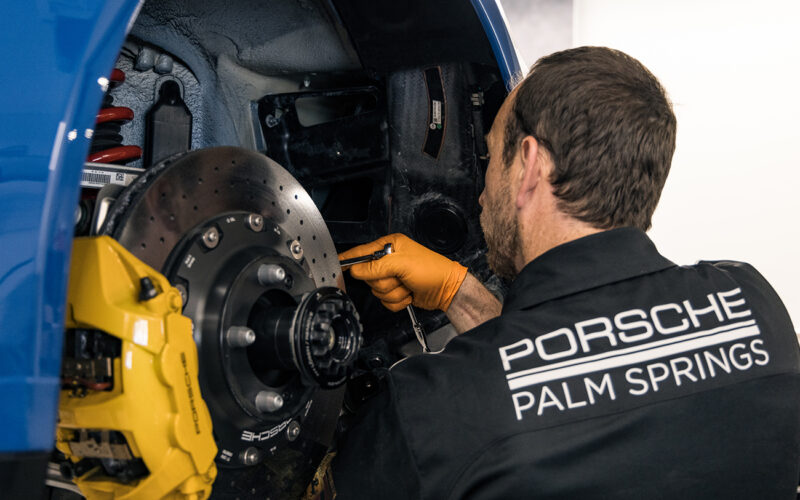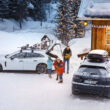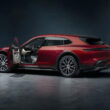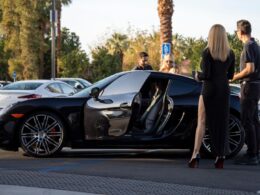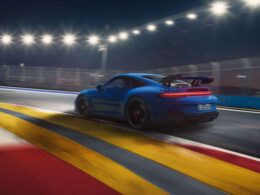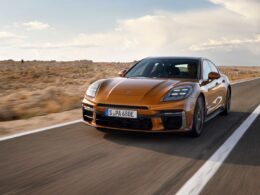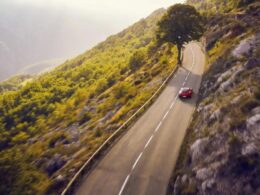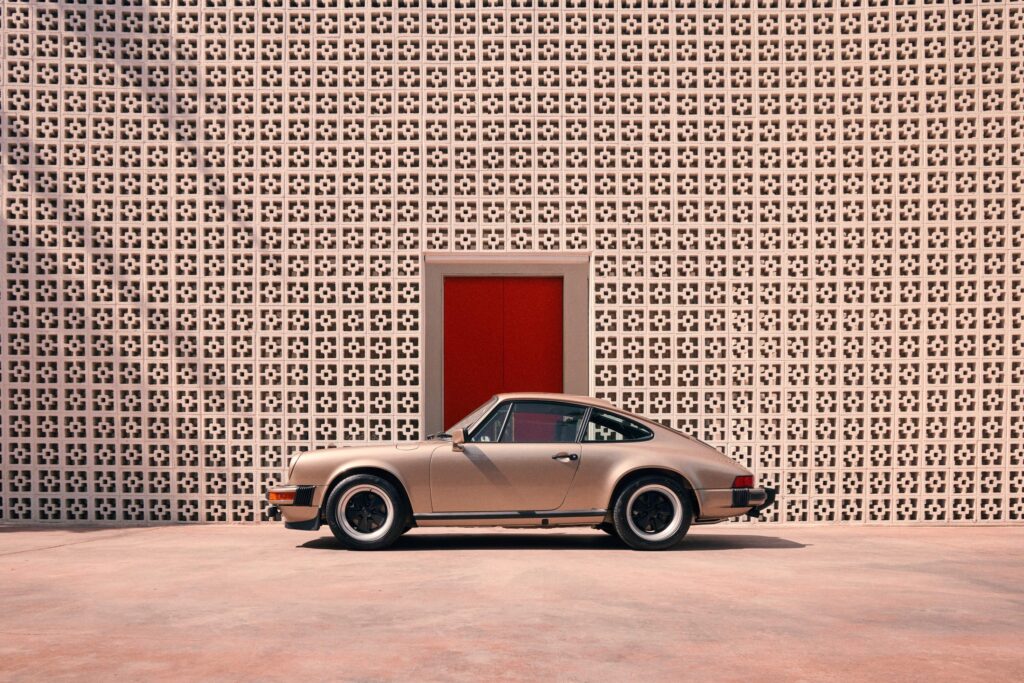We all know that Porsche makes some of the finest cars on the planet. And when it comes right down to it, that greatness is found in the details, especially within the Porsche Surface Coated Brakes.
And the Cayenne represents the greatness of Porsche Surface Coated Brakes (PSCBs) like no other SUV on the planet.
The Cayenne luxury SUV drives similarly to a sports car, with precision handling and agility. You can drive on windy roads while enjoying the underlying firmness of an SUV.
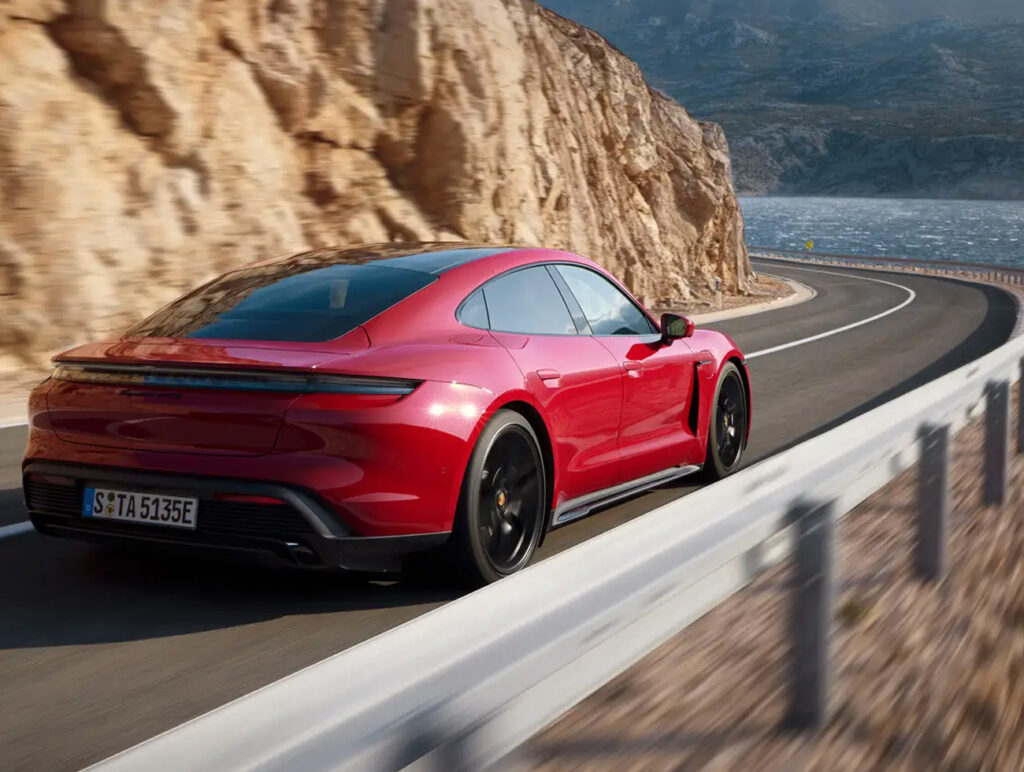
It delivers pristine performance and plenty of style, making it a popular choice for a luxury midsize SUV.
But some of the features that make it great are not readily seen by the consumer. For instance, the Cayenne, like other Porsche models, has class-defining brakes.
Porsche Surface Coated Brakes (PSCBs)
These Porsche Brakes don’t rust and produce very little brake dust. And, best of all, the brakes will debut as a standard feature of the new Cayenne Turbo.
The PSCBs is nothing less than a worldwide first. Its surface consists of tungsten carbide. Tungsten and carbon form a mixed crystal so hard that they can be used to cut glass. Tungsten carbide is one of the hardest materials in the world after diamond, and around ten times harder than gray cast iron—which is precisely what makes it so interesting to brake engineers.
It’s a brake that functions similarly to a ceramic brake and has the same thermal stability but costs only about one-third as much. It doesn’t need racing pads and shows much less wear than a conventional gray-iron brake. Best of all, as we mentioned, it produces little brake dust and won’t rust.
That sounds like alchemy – but it’s simply cutting-edge technology from Porsche.
New technology developed for racing is often transferred to road vehicles.
The Porsche Ceramic Composite Brakes (PCCBs) are a perfect example of this phenomenon. It’s a master at deceleration and the absolute benchmark in its field.
Modern gray-iron brakes are nothing to sniff at, of course. But there was a need for a hybrid of these two types, which are both especially powerful Porsches that don’t necessarily hit the racetrack every day. The solution was obvious to the Porsche team developing the technology – a carbide coating. Their central question: Why shouldn’t tool steel with a century-long track record work just as well for a brake disc?
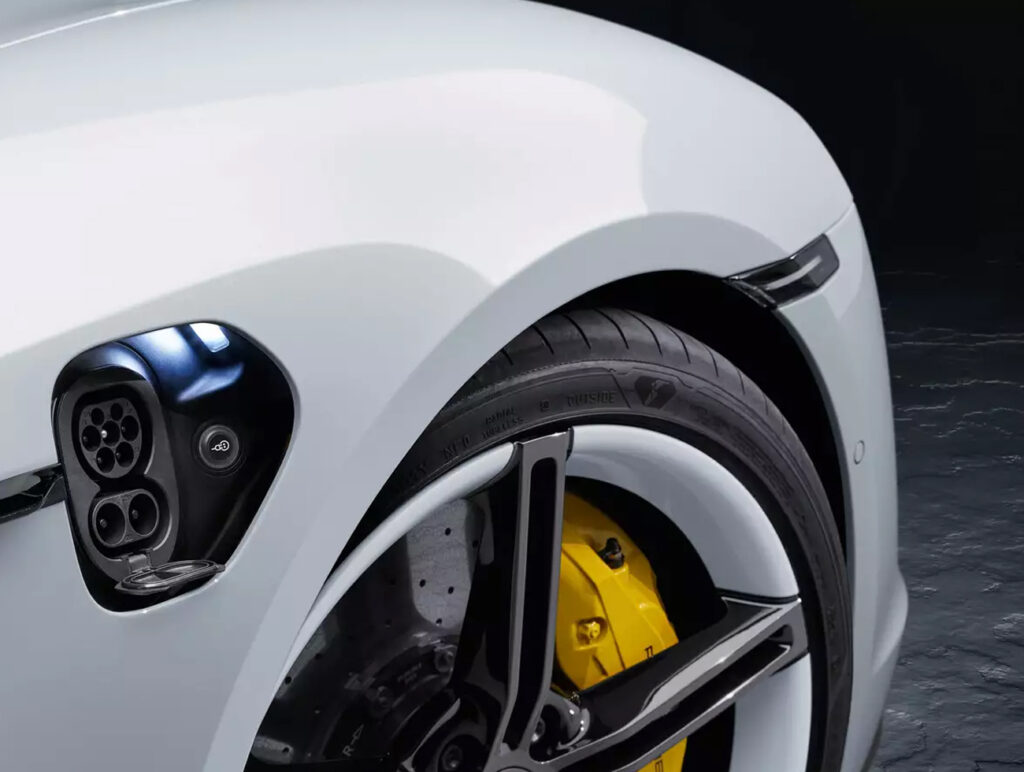
Simply put, a brake disc made entirely of tungsten carbide would cost as much as several sets of ceramic brakes. Moreover, the technology wasn’t sufficiently advanced to bind tungsten carbide to a substrate such as gray iron. But after a lengthy series of tests in close collaboration with Bosch/Buderus, Porsche made the breakthrough.
A gray-iron disc was laser-processed to offer structure, then galvanized with an interlayer. The interlayer acts like a flexible bond to relieve the differential thermal extension of gray iron and tungsten carbide, which is then applied in a spectacular manner: a high-velocity oxy-fuel spraying process shoots tungsten carbide particles at the disc at supersonic speeds.
For a moment, it looks like a Star Wars lightsaber is firing around the disc. The result is a coating around one hundred micrometers thick – but it still doesn’t do the trick on its own. Now what it needs are very special brake pads. A surface as smooth as a mirror needs a special pad that’s adhesive. Imagine running your finger with light pressure over a mirror; it doesn’t slide uniformly but instead keeps sticking for an instant. However, an overly soft pad on a very hard surface would wear down too quickly at high disc speeds. So the engineers added some very hard materials to the pad: microscopic particles that penetrate the tungsten carbide coating. These pads positively cling to the disc.
Check out: Think pink. As in Pink Porsche Taycan.
Clean as a whistle.
After around six thousand kilometers of normal use, the brake pads have polished the surface of the disc to a shine. Their color then matches the white ten-piston fixed calipers in the front and the four-piston fixed calipers in the rear, whose technology is familiar from the PCCBs. But why white? Leber laughs. “If a brake produces practically no dust, you want to advertise that fact. My color proposal met with a lot of initial resistance.” But after thousands of kilometers, the brakes on the new Porsche Cayenne test vehicles are still clean as a whistle.
The Porsche Surface Coated Brakeswill start as standard equipment only in the new Cayenne Turbo. It’s available as an option for all other new Cayenne models.
Here’s a graph showing the difference in braking performance between cast iron rotors and PSCBs.
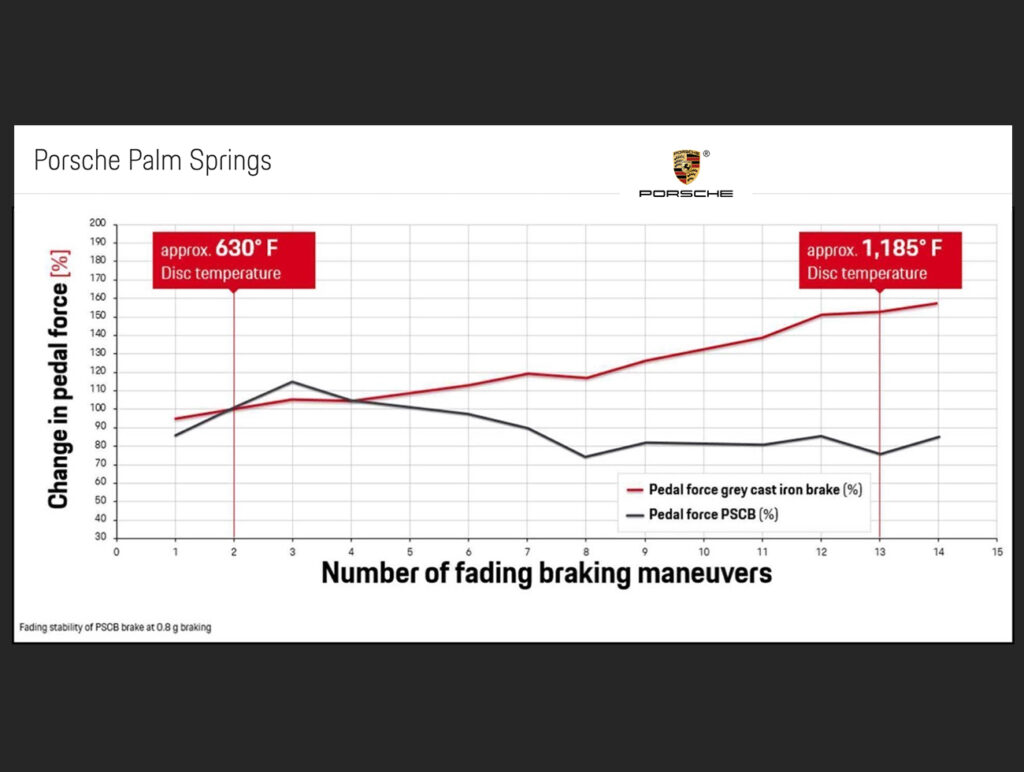
Each digit along the bottom shows a near-panic brake stop, repeated in succession. Notice as heat progressively builds up in a cast iron brake rotor, the amount of pedal pressure needed to stop the vehicle increases significantly. This is a classic case of brake fade.
PSCBs, however, almost laugh off the heat. With tungsten carbide being so resilient in dissipating heat, there is virtually no brake fade, even after 14 consecutive stops. That’s what makes them so close to carbon ceramic brakes in terms of thermal stability.
Speaking of brakes, if you’re a Porsche enthusiast you might wonder why Taycans are forced to take Porsche Surface Coated Brakes when selecting the 21” Mission E Design Wheels.
Here’s why…
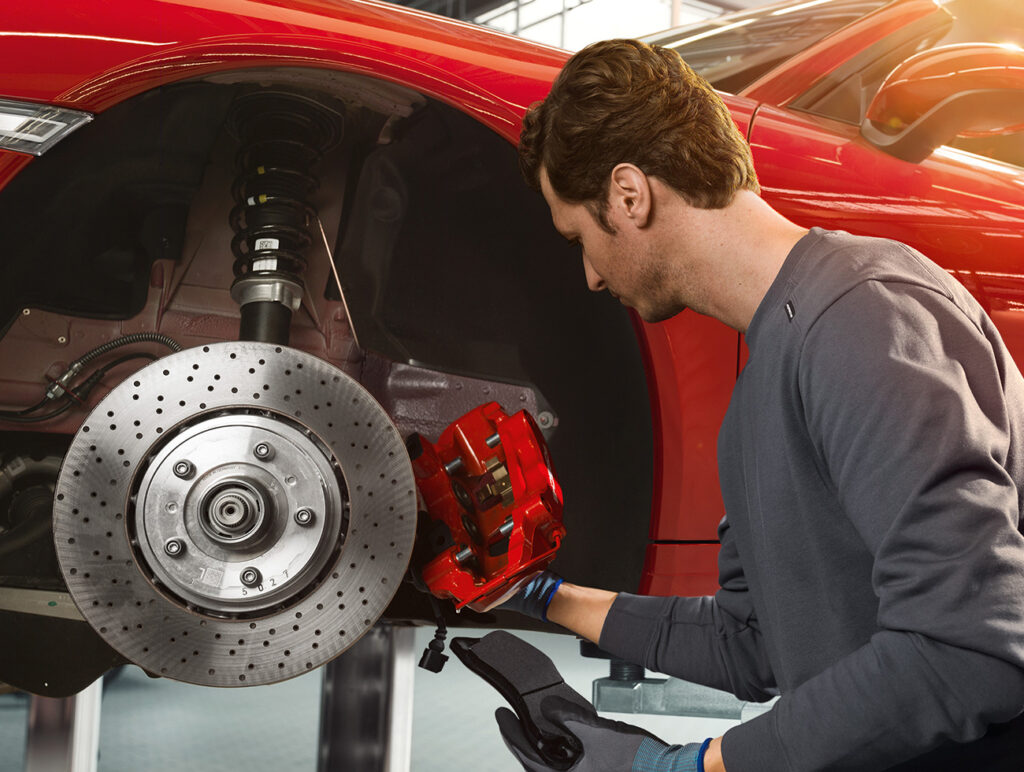
During the initial testing of Mission E Design wheels, Porsche originally used a smaller diameter cast-iron brake rotor.
Unfortunately, at higher speeds, there was a pronounced resonance inside the cabin that could be heard. As a result, Porsche paired the Mission E Design wheel with the larger diameter PSCBs rotor which eliminated the prior resonance. And that is why Porsche forces PSCBs with that wheel – or you can select PCCBs with even larger rotors that continue to suppress the resonance of a smaller brake.
Porsche Ceramic Composite Brakes (PCCBs).
When you desire the ultimate braking performance, there is still no match for Porsche Ceramic Composite Brakes.
Here’s a great video from the show How It’s Made on how carbon ceramic rotors are produced.
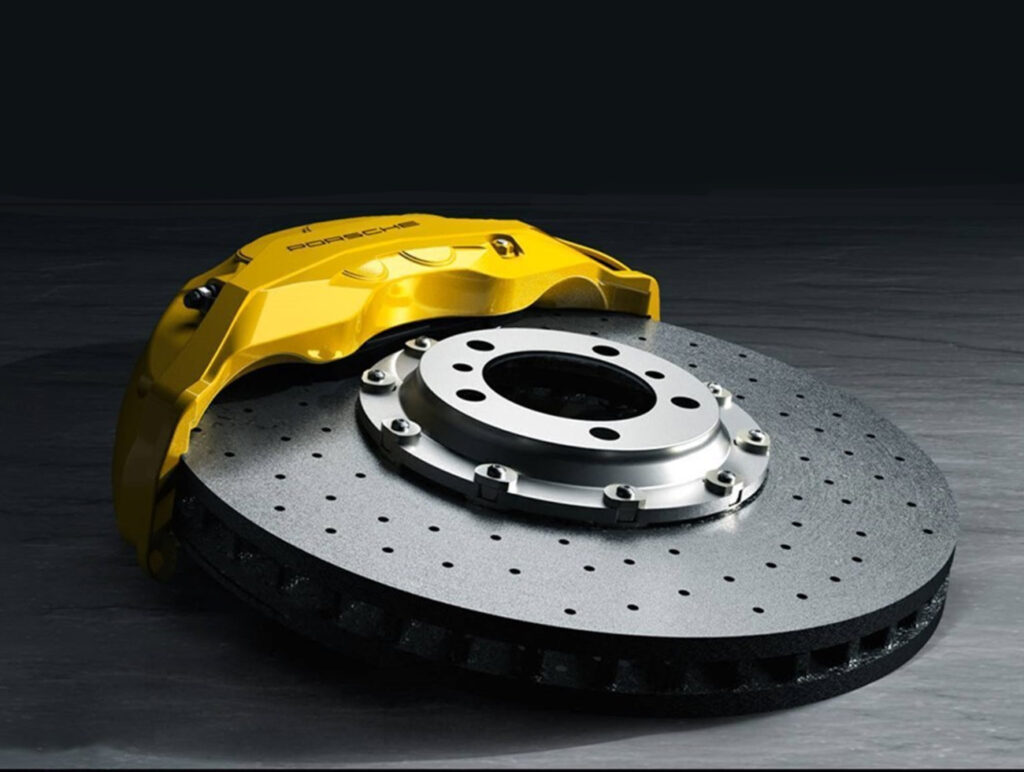
And Then There is Porsche Dynamic Chassis Control.
This is another component that makes Porsche great. It’s a system for roll stabilization with active electromechanical stabilizers on the front and rear axles.
This will not only reduce lateral tilt in turns, but will also increase driving dynamics, agility, and comfort. It will also create more even tire wear as time plays out.
This is a facet of the Cayenne, and it’s standard on Turbo S E-Hybrid and Turbo GT models.
Being that the Cayenne sits taller than all other Porsche vehicles, this is the product that really benefits most from PDCC.
Click here for a great video on how the system affects body roll, overall comfort, and even off-roading.
Porsche surface coated brakes
For those customers looking for the ultimate chassis performance in Cayenne, it’s well worth considering this option.
Let’s also take a look at the powertrain configuration of Cayenne E-Hybrid models.
The schematic below shows how the main pieces are laid out, with the electric motor placed between the engine and transmission, as well as the high-voltage battery positioned at the rear underneath the load floor.
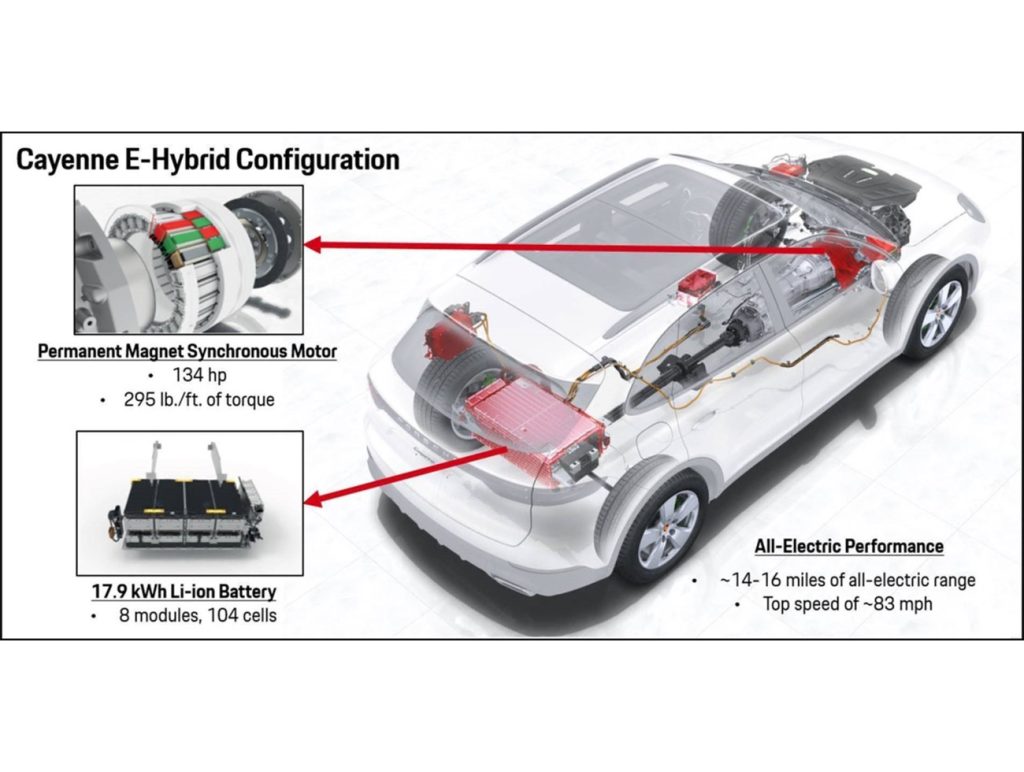
Cayenne E-Hybrid models have an estimated all-electric range of between 14 and 16 miles. These numbers are based on the all-electric range shown by the EPA.
Range on the Cayenne E-Hybrid will, of course, vary based on driving style.
The ears have it
Cayenne also offers two premium audio systems: the Bose 710-watt, 14-speaker system, and the Burmester 1,455-watt, 21-speaker system.
Because greatness is found in the details. And Porsche always strives to be the best.
Want to take advantage of the technology the Porsche Surface Coated Brakes offer? Shop our latest Cayenne inventory today.


